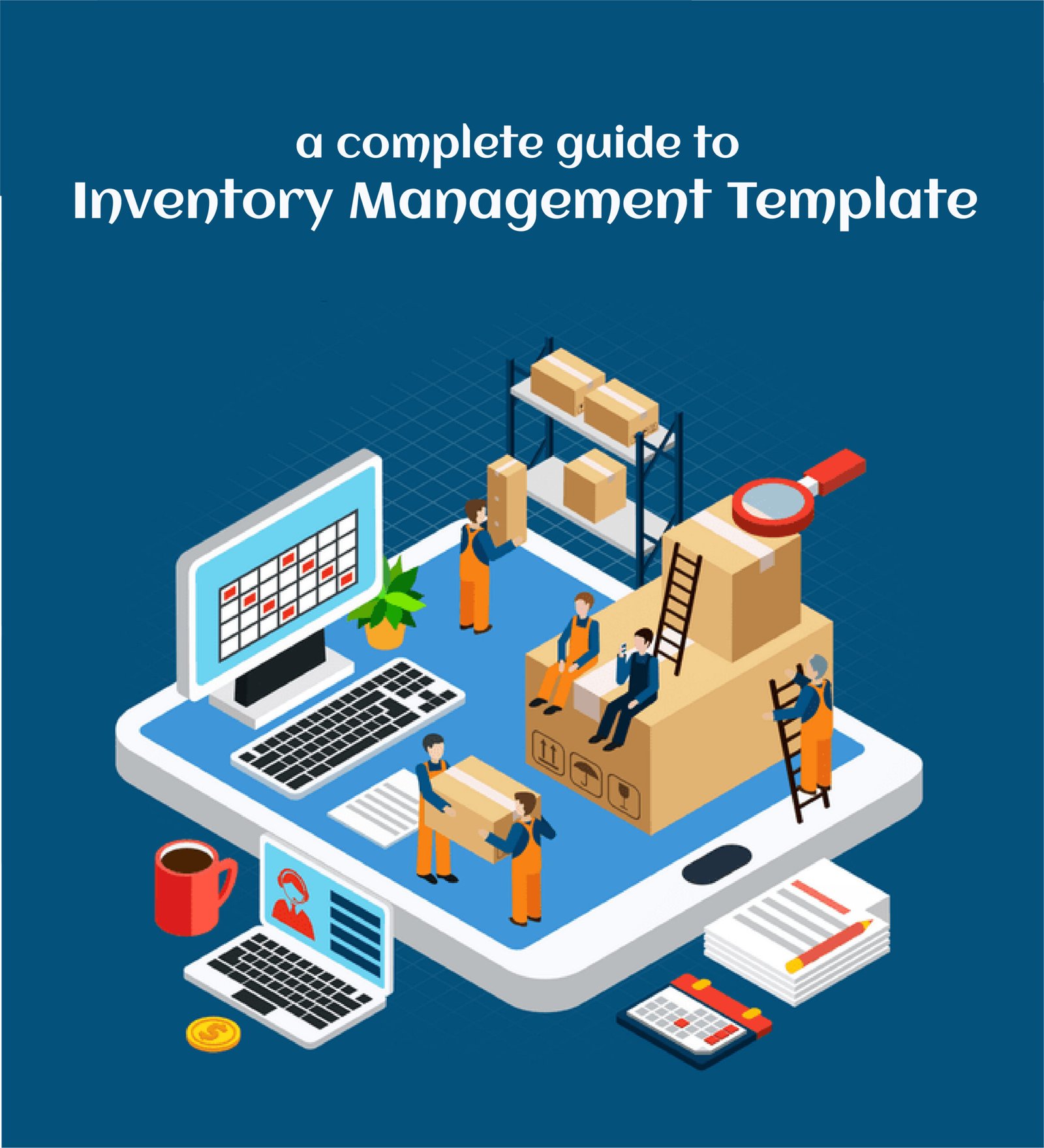If you are in need of Inventory Management Templates, then this platform is perfect for you. But before discussing this template, we will first discuss about Inventory Management.
Managing inventory efficiently is crucial for businesses to meet customer demands while minimizing costs. Inventory management involves overseeing the flow of goods from manufacturers to warehouses, and finally to customers. Effective inventory management ensures optimal levels of stock, reducing holding costs while meeting customer demand.
Importance Of Inventory Management:
Let’s delve into the key reasons why inventory management is so vital:
Cost Control and Optimization
- Reduced Holding Costs: Excess inventory ties up capital in storage and carrying costs. Efficient management helps minimize excess stock, reducing holding costs.
- Optimized Ordering: Proper inventory management ensures accurate forecasting and ordering, preventing overstocking or stockouts that lead to unnecessary expenses.
- Minimized Obsolescence: Inventory management helps identify slow-moving or obsolete items, enabling businesses to mitigate losses by adjusting production or discounting.
Related Article: Project Cost Tracking Template Excel | PMITOOLS
Improved Cash Flow
- Faster Turnover: Efficient inventory turnover means goods spend less time sitting in warehouses, allowing businesses to convert inventory into revenue more quickly.
- Better Working Capital Management: By reducing excess inventory, businesses free up capital that can be invested in other areas like expansion, marketing, or innovation.
Enhanced Operational Efficiency
- Streamlined Operations: Proper inventory management ensures the right products are available when needed, reducing delays in production or fulfillment.
- Optimized Space Utilization: By managing inventory levels effectively, businesses can utilize warehouse space more efficiently, reducing storage costs.
Meeting Customer Demand
- Improved Customer Satisfaction: Maintaining optimal inventory levels ensures businesses can fulfill customer orders promptly, leading to higher satisfaction and retention.
- Reduced Stockouts: Inventory management helps prevent stockouts, avoiding lost sales opportunities and damage to the brand reputation.
Accurate Financial Reporting
- Accurate Costing: Proper inventory management ensures accurate cost allocation for goods sold, leading to more precise financial statements and profitability analysis.
- Compliance: Many accounting standards and regulations require accurate inventory valuation, making proper inventory management essential for compliance.
Supply Chain Management
- Supplier Relationships: Effective inventory management facilitates better communication with suppliers, enabling businesses to negotiate favorable terms and ensure timely deliveries.
- Risk Management: By monitoring inventory levels and lead times, businesses can mitigate risks associated with supply chain disruptions or sudden demand changes.
Strategic Decision-Making
- Data-Driven Insights: Inventory data provides valuable insights into demand patterns, market trends, and product performance, aiding strategic decision-making.
- Product Development: Understanding inventory trends helps businesses identify opportunities for product innovation or expansion.
Related Article: 5 Useful Steps To Create Work Plan Template Excel – PMITOOLS

Who Manages Inventory Management:
Inventory management is typically overseen by individuals or teams within an organization who are responsible for ensuring that the company’s inventory is effectively controlled, monitored, and optimized. The specific management of inventory can vary depending on the size and structure of the organization, but here are the main stakeholders involved in managing inventory:
Inventory Manager
- Role: The inventory manager is responsible for overseeing all aspects of inventory management.
- Responsibilities:
- Developing inventory policies and procedures.
- Setting inventory targets and goals.
- Planning and executing inventory strategies.
- Monitoring inventory levels and stock movements.
- Analyzing data to identify trends and make informed decisions.
- Managing relationships with suppliers and vendors.
- Implementing inventory control measures to prevent losses or discrepancies.
- Training and supervising staff involved in inventory management.
Supply Chain Manager
- Role: The supply chain manager oversees the entire supply chain process, including procurement, production, and distribution.
- Responsibilities:
- Collaborating with other departments to ensure smooth flow of materials and products.
- Developing sourcing strategies to ensure timely and cost-effective procurement of inventory.
- Optimizing transportation and logistics to minimize lead times and costs.
- Monitoring supplier performance and negotiating contracts.
- Identifying opportunities for process improvements and cost savings.
Operations Manager
- Role: The operations manager is responsible for overseeing day-to-day operations, including inventory management within warehouses or distribution centers.
- Responsibilities:
- Managing inventory receiving, storage, and picking processes.
- Ensuring inventory accuracy through regular audits and cycle counts.
- Implementing safety and security measures to protect inventory.
- Optimizing warehouse layout and space utilization.
- Coordinating with other departments to meet production and fulfillment goals.
Purchasing Manager/Buyer
- Role: The purchasing manager or buyer is responsible for procuring inventory from suppliers.
- Responsibilities:
- Identifying and selecting suppliers.
- Negotiating terms and prices with suppliers.
- Placing purchase orders and tracking deliveries.
- Managing supplier relationships and resolving any issues that arise.
- Monitoring inventory levels and adjusting orders based on demand forecasts.
Finance Manager
- Role: The finance manager oversees financial aspects related to inventory management.
- Responsibilities:
- Budgeting and forecasting inventory costs.
- Analyzing inventory valuation and accounting.
- Ensuring compliance with financial regulations and standards.
- Providing financial insights to support inventory decisions.
- Evaluating the financial impact of inventory management strategies.
IT Manager
- Role: The IT manager provides technological support for inventory management systems and processes.
- Responsibilities:
- Implementing and maintaining inventory management software.
- Customizing software to meet the organization’s needs.
- Integrating inventory management systems with other business systems (e.g., ERP, CRM).
- Providing training and technical support to users.
- Ensuring data security and integrity.
Related Article: The #1 Useful Multiple Project Tracking Templates – PMITOOLS
Inventory Management Template:
An inventory management template is a pre-designed spreadsheet or document used to organize, track, and manage inventory-related data efficiently. It typically includes various sections and features to facilitate inventory management tasks.
Examples of Inventory Management Templates
- Microsoft Excel Templates: Excel offers numerous pre-designed inventory management templates available for download from the Microsoft Office website or other sources.
- Online Platforms: Websites like Smartsheet, Google Sheets, or Airtable offer customizable inventory management templates.
- Inventory Management Software: Many inventory management software solutions come with built-in templates or customizable options to meet specific business needs.





